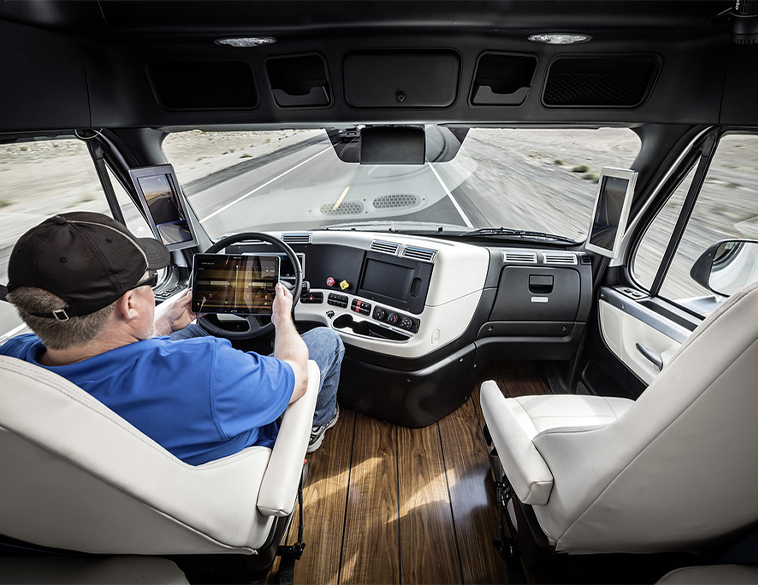Game-changing technology for fleets continues to gain momentum.
As part of the Sustainable Fleet Technology series of webinars, the session on Video Telematics provided some very interesting observations.
Not only did it showcase the rapid deployment of this technology among fleets in North America but also how real fleets are using it to their advantage.
The webinar, moderated by Rick Sapienza, Director, Clean Transportation Program, North Carolina Clean Energy Technology Center, and featured Somik Ukil, CEO of Light Metrics and Andrew Ryback, Business Development Manager, Geotab.
It also featured representatives from two municipal fleets in the U.S. which provided a fascinating overview of their experience using video telematics.
De facto norm
Somik Ukil, CEO of Light Metrics (an advanced video telematics solutions provider), discussed the concept of Video Telematics, providing an overview of what telematics actually is and how it’s evolving.
In terms of video telematics, Ukil said that video technology today is where GPS technology was a decade ago and he noted that as time marches on, video telematics is becoming a de facto “norm” in the commercial trade industry.
Essentially, he said that video, for all intents and purposes, “is” the new GPS.
He also explained how video telematics can help tackle some of the biggest challenges facing fleets today.
A big one is actually hiring and retaining drivers which is becoming increasingly difficult, especially among younger people.
And although Ukil was speaking primarily from a U.S. perspective, the issue of fraudulent claims and lawsuits is a major contention for fleets across North America, since in some cases litigation can lead to bankruptcy.
That’s why he said, it is important to really understand the concept of video telematics and how it can help tackle these very significant problems.
There’s also the issue of training drivers to be more effective and efficient and using technology to help, as well as dealing with rising costs related to vehicle safety and maintenance, ensuring vehicles are operating as efficiently as possible and downtime is minimized.
Surge in demand
Because video has the ability to help tackle some of these problems, Ukil said that certainly in the U.S., he’s seen a big surge in demand for video telematics services and not just from large, corporate fleets, but smaller operators as well.
According to research from Berg’s Insight, the Compound Annual Growth Rate (CAGR) for telematics adoption among fleets in North America is 16.2% and is only expected to increase in the coming years.
This is being driven by several factors, one of which is the reduction in the cost of the technology including video dash-mounted cameras.
Additionally, data plans are improving, as is artificial intelligence technology, allowing video to be used proactively to help prevent collisions instead of just observing their aftermath.
And because it can do this, video telematics can allow fleets to take preventative measures such as avoiding possible fraudulent claims and legal ramifications because it allows the capturing and sharing of conclusive information.
As a result, it can be a big game-changer, with hard evidence that allows drivers to be exonerated and the fleet and company’s reputation maintained or enhanced in the face of potential litigation claims made against the individual or fleet.
Driver behaviour
Another area where video telematics offers major advantages concerns driver behaviour at the wheel.
Video, when combined with telematics data can paint an accurate picture of how each driver performs their duties, effectively creating an accurate scorecard.
From this, not only are fleet managers able to determine which drivers are performing better than others, they can then provide effective solutions to help those drivers needing improvement, by providing actionable insights to help engage them in the conversation.
Yet as Ukil acknowledged, the most successful fleets go a step beyond and are using video telematics to not only engage their drivers but reward them for good performance.
In addition to a discussion on video telematics, the webinar also provided some case study examples.
Brad Salazar, Fleet Director for the City and County of Denver in Colorado, said that in terms of telematics the fleet predominately uses telematics for maintenance issues, routing, theft recovery, crash liability and performance measurements, along with driver tendencies and trends.
The City creates a driver behaviour modification program, working internally with its risk management team, as well as its safety department and performance office.
The result allows unsafe driving trends to be quickly identified as well as cultural thresholds.
Plus the program allows the fleet manager to see where disciplinary measures need to be introduced as well as rewarding safe and exceptional driving.
Importance of alignment
Salazar stressed the importance of making sure fleet policy and strategy are aligned when it comes to video telematics.
As Denver has rolled out this initiative, a lot of drivers and customers have been asking, what’s in it for them?
Salazar said that for drivers, it was important to stress that being receptive to receive help in becoming better drivers, not only does it improve driver performance and safety, but also safety for the city and county residents as well.
Additionally, video telematics also provides drivers with access to their own scorecard so they can measure their own performance as well as provide incentives as part of the driver behaviour modification program.
Another case study revolved around the City of Orlando in Florida.
David Dunn, Division Manager of Fleet Facilities for Orlando, discussed how the city is using video telematics to boost safety, operational efficiency and risk management mitigation.
Camera use began following a rollover of a solid waste truck, and since then the technology has been deployed rapidly.
A challenge has been migrating onto new networks, 4G and 5G. But today, Orlando utilizes a new system that makes things much simpler and faster.
A case in point is the ability to now get instant access to video recordings versus a 24-72 hour waiting period that was often the case in the past.
Real gamechanger
Better viewing capability, as well as better control over alerts, has really proved a gamechanger.
For Public Safety response, a helicopter mode function allows monitoring in near real-time.
It enables the viewer to watch an emergency vehicle as it is progressing toward its objective.
Since implementing the technology, Orlando has seen reduced collision rates, reduced speeding and reduce distracted driving.
It’s also allowed the city to save money on insurance and accident-related costs.
Yet despite the advantages video telematics brings, Dunn acknowledged that there is still resistance to it.
But by offering education and coaching about the benefits of the system, there is an opportunity to turn skepticism into enthusiasm.
Especially when these programs can incentivize drivers for good behaviour.
The session concluded with insight from Andrew Rybak, Business Development Manager at Geotab, who provided details on how the company is helping fleets really maximize the use of the data that’s coming from vehicles equipped with video telematics technology.



